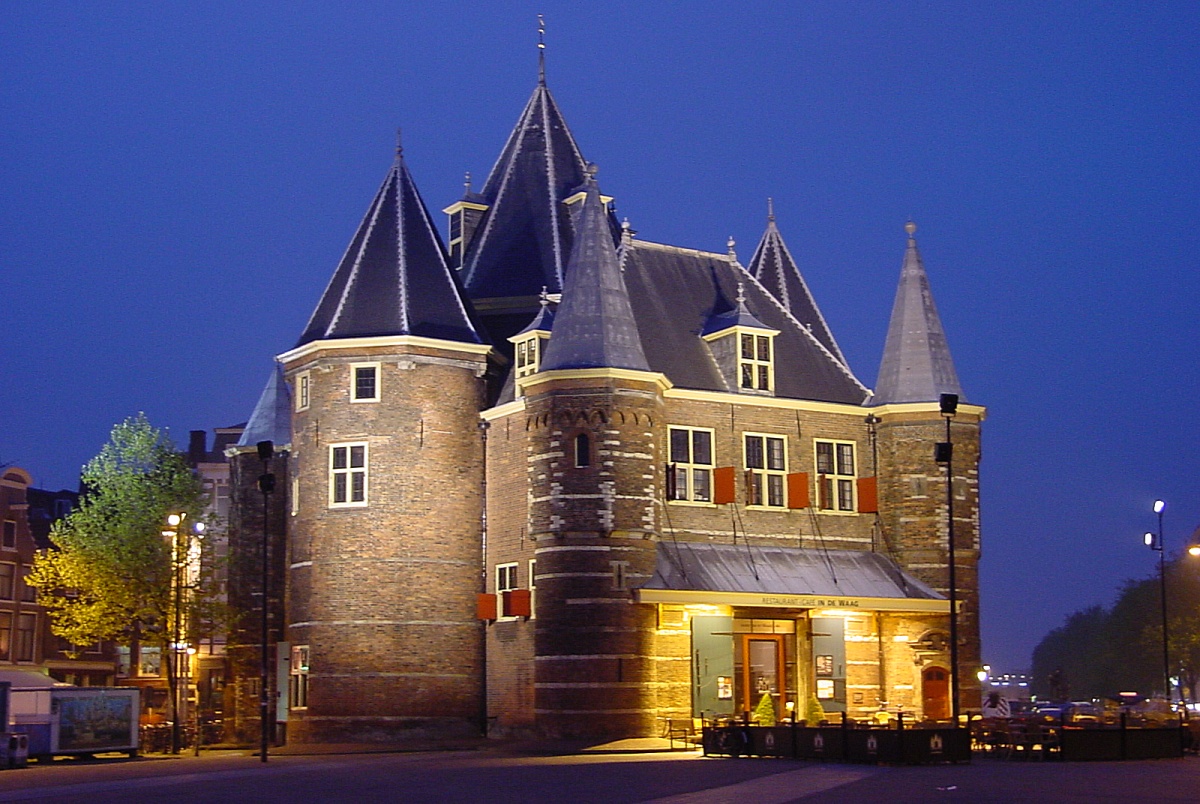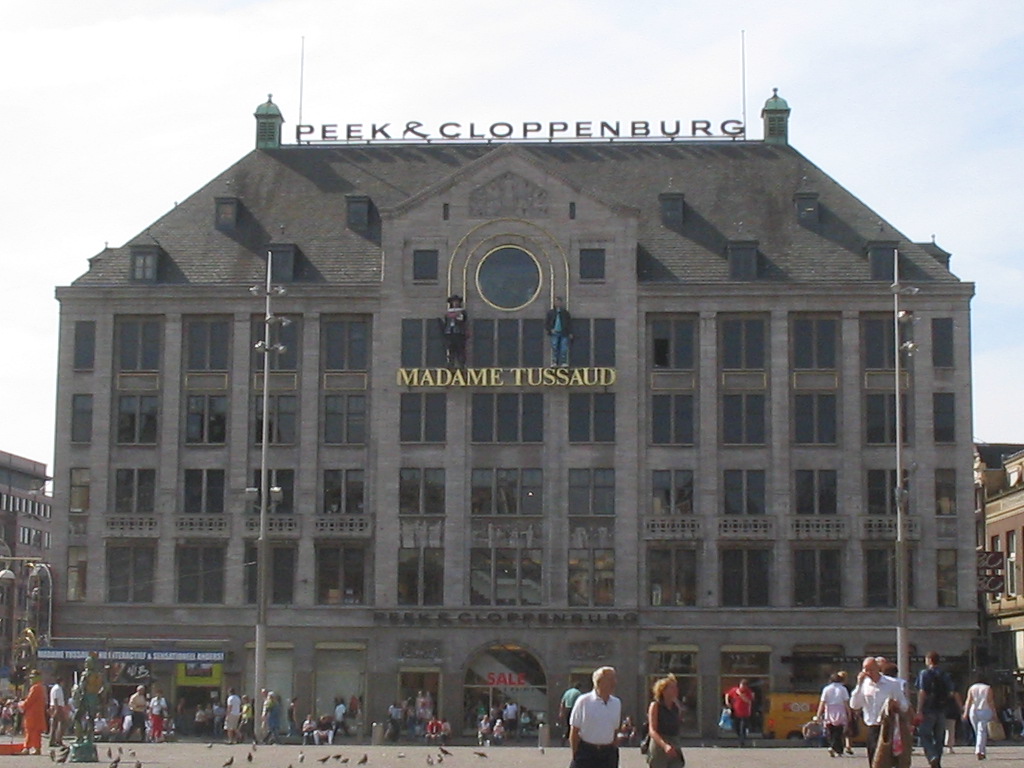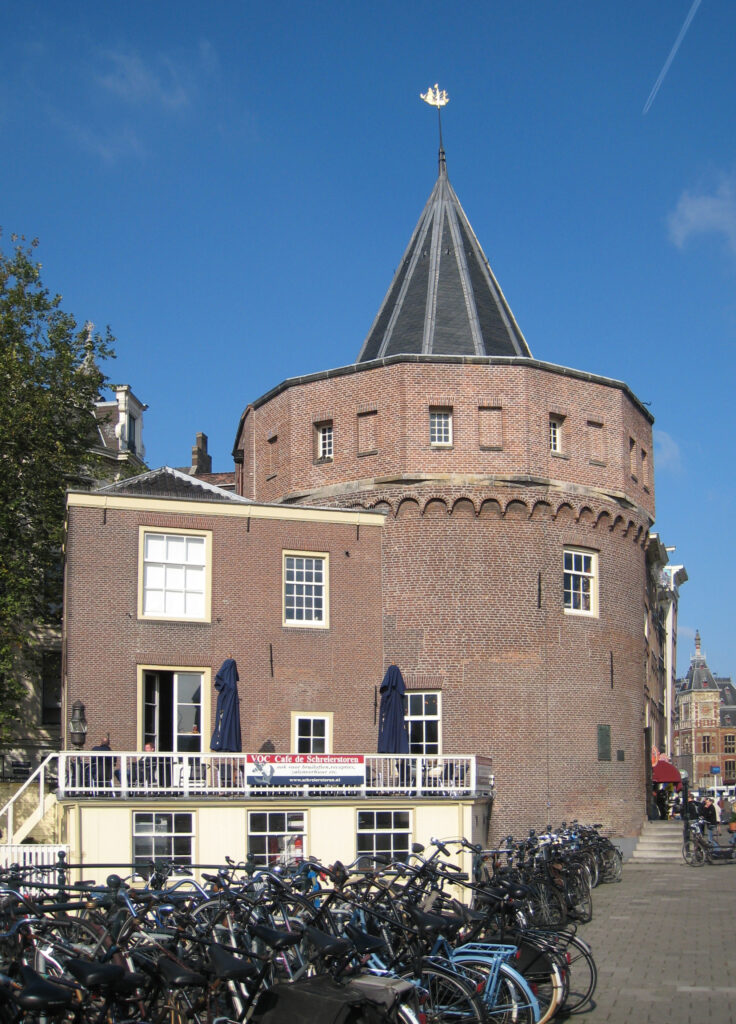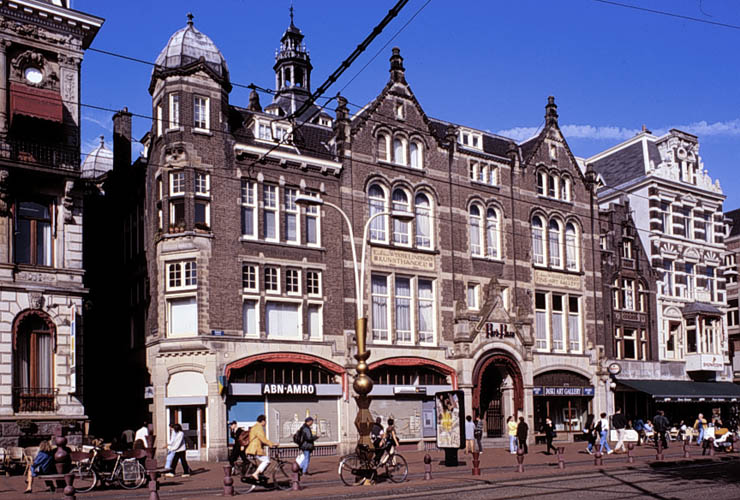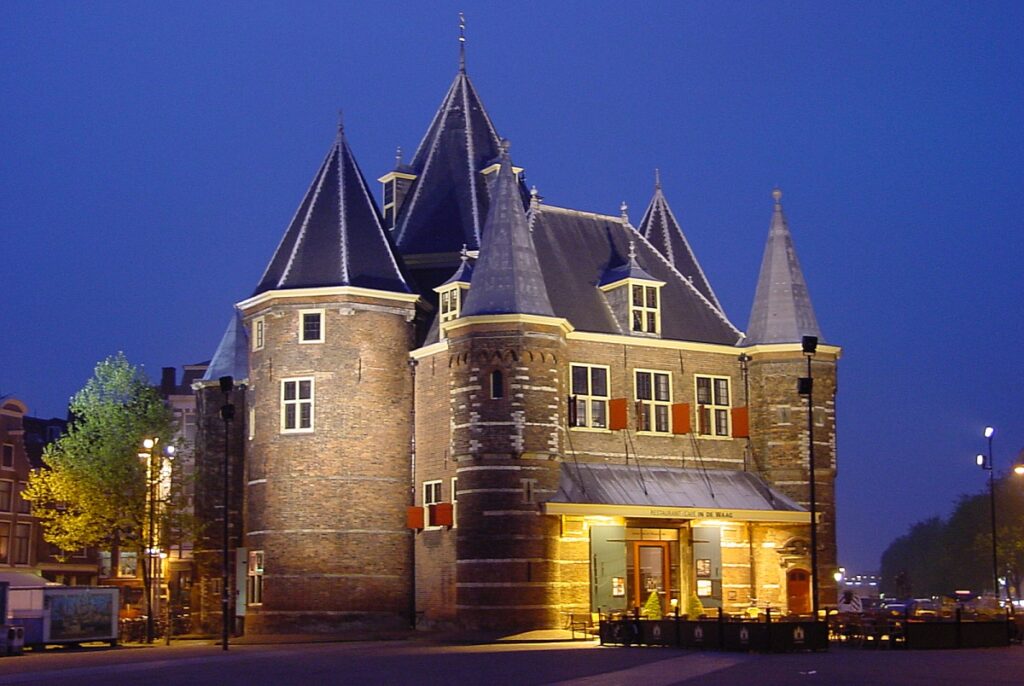
The Waag, or “Public Weigh House” in Dutch, is an iconic Amsterdam landmark located on Nieuwmarkt Square in the Centrum district. This 15th-century building is the oldest secular structure still standing in the city and was listed as a national monument in 1970. Through its various functions over the centuries, the Waag has become a symbol of Amsterdam’s history and evolution.
Galerie photos
History and origin
The Waag was originally a city gate known as Sint Antoniespoort, dating back to the 14th century. Located at the entrance to what is now the Nieuwmarkt district, the gate was part of the city’s medieval fortifications. Built between 1481 and 1494, it served as a strategic access point to Amsterdam via the Zeedijk. Although its defensive role disappeared with the expansion of the city, the gate underwent several transformations over the centuries. It became a public weigh house in 1617, where guilds found a place to meet and trade.
The public weigh house and the guilds
The conversion of the Sint Antoniespoort into a weigh house at the end of the 16th century allowed for the centralization of public weighings, and the space was converted to accommodate various guilds. Blacksmiths, painters, masons, and surgeons occupied the upper floors, each with dedicated access. The guild emblems still adorn the various entrances to the building today, testifying to its crucial role in the economic and social life of Amsterdam at that time. In 1691, a large dome was added to the building, and the Waag took on its current appearance.
Transformations and restoration
The Waag has served various functions over the centuries, from a fencing hall in the 19th century to a fire station and even a municipal archive. It was also a museum in the 20th century, housing collections from the Amsterdam Historical Museum. After several years of decline, restoration work began in the 1990s under the direction of architect Walter Kramer, and the building was returned to the city to become a cultural center and café-restaurant.
Facade and architecture
The Waag’s architecture is distinguished by its defensive elements, with imposing towers and walls nearly two meters thick. The building’s facade is adorned with remarkable architectural details, including inscriptions and guild emblems, such as the “Theatrum Anatomicum” above the door of the surgeons’ guild, highlighting the history of the place. The restoration work preserved this facade and reinforced the building’s foundations, which are subject to the constraints of Amsterdam’s soil.
Current cultural role
Today, the Waag still houses a café-restaurant and is the center of an institution dedicated to art, science, and technology, the Waag Society. It remains a meeting place for locals and visitors alike, with regular events such as the “April Festivals,” which attract many participants each year.
